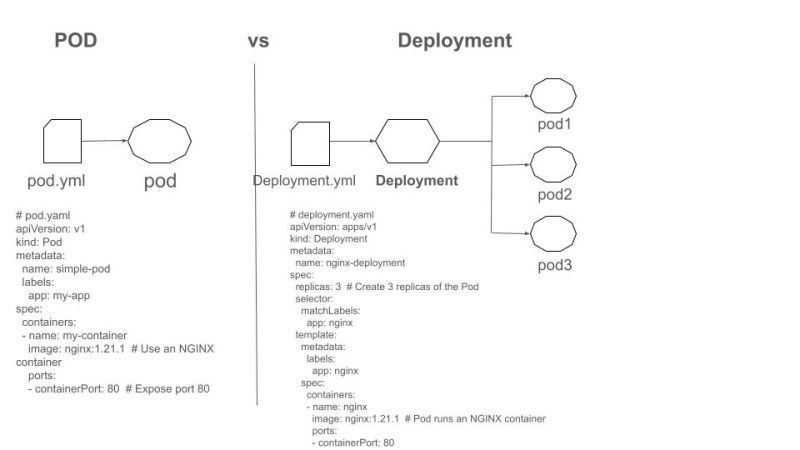Python: 100 Simple Codes
Python: 100 Simple CodesBeginner-friendly collection of easy-to-understand Python examples.Each code snippet is designed to help you learn programming concepts step by step, from basic syntax to simple projects. Perfect for students, self-learners, and anyone who wants to practice Python in a fun and practical way.Codes:1. Print Hello World 2. Add Two Numbers 3. Check Even or Odd 4. Find Maximum of Two Numbers 5. Simple Calculator 6. Swap Two Variables 7. Check Positive, Negative or Zero 8. Factorial Using Loop 9. Fibonacci Sequence 10. Check Prime Number === 11. Sum of Numbers in a List 12. Find the Largest Number in a List 13. Count Characters in a String 14. Reverse a String 15. Check Palindrome 16. Generate Random Number 17. Simple While Loop 18. Print Multiplication Table 19. Convert Celsius to Fahrenheit 20. Check Leap Year === 21. Find GCD (Greatest Common Divisor) 22. Find LCM (Least Common Multiple) 23. Check Armstrong Number 24. Calculate Power (Exponent) 25. Find ASCII Value 26. Convert Decimal to Binary 27. Convert Binary to Decimal 28. Find Square Root 29. Simple Function 30. Function with Parameters === 31. Function with Default Parameter 32. Return Multiple Values from Function 33. List Comprehension 34. Filter Even Numbers from List 35. Simple Dictionary 36. Loop Through Dictionary 37. Check if Key Exists in Dictionary 38. Use Set to Remove Duplicates 39. Sort a List 40. Sort List in Descending Order === 41. Create a Tuple 42. Loop Through a Tuple 43. Unpack a Tuple 44. Find Length of a List 45. Append to List 46. Remove from List 47. Pop Last Item from List 48. Use range() in Loop 49. Use break in Loop 50. Use continue in Loop === 51. Check if List is Empty 52. Join List into String 53. Split String into List 54. Use enumerate() in Loop 55. Nested Loop 56. Simple Class Example 57. Class Inheritance 58. Read Input from User 59. Try-Except for Error Handling 60. Raise Custom Error === 61. Lambda Function 62. Map Function 63. Filter Function 64. Reduce Function 65. Zip Two Lists 66. List to Dictionary 67. Reverse a List 68. Sort List of Tuples by Second Value 69. Flatten Nested List 70. Count Occurrences in List === 71. Check All Elements with all() 72. Check Any Element with any() 73. Find Index in List 74. Convert List to Set 75. Find Intersection of Sets 76. Find Union of Sets 77. Find Difference of Sets 78. Check Subset 79. Check Superset 80. Loop with Else Clause === 81. Use pass Statement 82. Use del to Delete Item 83. Check Type of Variable 84. Format String with f-string 85. Simple List Slicing 86. Nested If Statement 87. Global Variable 88. Check if String Contains Substring 89. Count Characters in Dictionary 90. Create 2D List === 91. Check if List Contains Item 92. Reverse a Number 93. Sum of Digits 94. Check Perfect Number 95. Simple Countdown 96. Print Pattern with Stars 97. Check if String is Digit 98. Check if All Letters Are Uppercase 99. Simple Timer with Sleep 100. Basic File Write and Read ===

Beginner-friendly collection of easy-to-understand Python examples.

Each code snippet is designed to help you learn programming concepts step by step, from basic syntax to simple projects. Perfect for students, self-learners, and anyone who wants to practice Python in a fun and practical way.
Codes:
1. Print Hello World
2. Add Two Numbers
3. Check Even or Odd
4. Find Maximum of Two Numbers
5. Simple Calculator
6. Swap Two Variables
7. Check Positive, Negative or Zero
8. Factorial Using Loop
9. Fibonacci Sequence
10. Check Prime Number
===
11. Sum of Numbers in a List
12. Find the Largest Number in a List
13. Count Characters in a String
14. Reverse a String
15. Check Palindrome
16. Generate Random Number
17. Simple While Loop
18. Print Multiplication Table
19. Convert Celsius to Fahrenheit
20. Check Leap Year
===
21. Find GCD (Greatest Common Divisor)
22. Find LCM (Least Common Multiple)
23. Check Armstrong Number
24. Calculate Power (Exponent)
25. Find ASCII Value
26. Convert Decimal to Binary
27. Convert Binary to Decimal
28. Find Square Root
29. Simple Function
30. Function with Parameters
===
31. Function with Default Parameter
32. Return Multiple Values from Function
33. List Comprehension
34. Filter Even Numbers from List
35. Simple Dictionary
36. Loop Through Dictionary
37. Check if Key Exists in Dictionary
38. Use Set to Remove Duplicates
39. Sort a List
40. Sort List in Descending Order
===
41. Create a Tuple
42. Loop Through a Tuple
43. Unpack a Tuple
44. Find Length of a List
45. Append to List
46. Remove from List
47. Pop Last Item from List
48. Use range() in Loop
49. Use break in Loop
50. Use continue in Loop
===
51. Check if List is Empty
52. Join List into String
53. Split String into List
54. Use enumerate() in Loop
55. Nested Loop
56. Simple Class Example
57. Class Inheritance
58. Read Input from User
59. Try-Except for Error Handling
60. Raise Custom Error
===
61. Lambda Function
62. Map Function
63. Filter Function
64. Reduce Function
65. Zip Two Lists
66. List to Dictionary
67. Reverse a List
68. Sort List of Tuples by Second Value
69. Flatten Nested List
70. Count Occurrences in List
===
71. Check All Elements with all()
72. Check Any Element with any()
73. Find Index in List
74. Convert List to Set
75. Find Intersection of Sets
76. Find Union of Sets
77. Find Difference of Sets
78. Check Subset
79. Check Superset
80. Loop with Else Clause
===
81. Use pass Statement
82. Use del to Delete Item
83. Check Type of Variable
84. Format String with f-string
85. Simple List Slicing
86. Nested If Statement
87. Global Variable
88. Check if String Contains Substring
89. Count Characters in Dictionary
90. Create 2D List
===
91. Check if List Contains Item
92. Reverse a Number
93. Sum of Digits
94. Check Perfect Number
95. Simple Countdown
96. Print Pattern with Stars
97. Check if String is Digit
98. Check if All Letters Are Uppercase
99. Simple Timer with Sleep
100. Basic File Write and Read
===




























![[Webinar] AI Is Already Inside Your SaaS Stack — Learn How to Prevent the Next Silent Breach](https://blogger.googleusercontent.com/img/b/R29vZ2xl/AVvXsEiOWn65wd33dg2uO99NrtKbpYLfcepwOLidQDMls0HXKlA91k6HURluRA4WXgJRAZldEe1VReMQZyyYt1PgnoAn5JPpILsWlXIzmrBSs_TBoyPwO7hZrWouBg2-O3mdeoeSGY-l9_bsZB7vbpKjTSvG93zNytjxgTaMPqo9iq9Z5pGa05CJOs9uXpwHFT4/s1600/ai-cyber.jpg?#)













































































































































![[The AI Show Episode 144]: ChatGPT’s New Memory, Shopify CEO’s Leaked “AI First” Memo, Google Cloud Next Releases, o3 and o4-mini Coming Soon & Llama 4’s Rocky Launch](https://www.marketingaiinstitute.com/hubfs/ep%20144%20cover.png)





































































































































































































![Rogue Company Elite tier list of best characters [April 2025]](https://media.pocketgamer.com/artwork/na-33136-1657102075/rogue-company-ios-android-tier-cover.jpg?#)







































































_Andreas_Prott_Alamy.jpg?width=1280&auto=webp&quality=80&disable=upscale#)































































































![What’s new in Android’s April 2025 Google System Updates [U: 4/18]](https://i0.wp.com/9to5google.com/wp-content/uploads/sites/4/2025/01/google-play-services-3.jpg?resize=1200%2C628&quality=82&strip=all&ssl=1)








![Apple Watch Series 10 Back On Sale for $299! [Lowest Price Ever]](https://www.iclarified.com/images/news/96657/96657/96657-640.jpg)
![EU Postpones Apple App Store Fines Amid Tariff Negotiations [Report]](https://www.iclarified.com/images/news/97068/97068/97068-640.jpg)
![Apple Slips to Fifth in China's Smartphone Market with 9% Decline [Report]](https://www.iclarified.com/images/news/97065/97065/97065-640.jpg)
































































































































